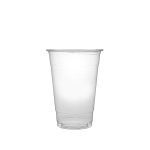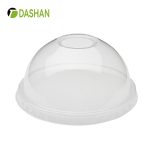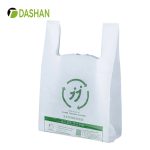When it comes to foodservice, beverage retail, and takeaway businesses, knowing the exact volume of your cup is more than just a detail—it’s the key to consistent product quality, accurate pricing, and a satisfying customer experience. For a popular size like 700ml, understanding how it translates into “cups” in different measurement systems is crucial, especially for bubble tea shops, juice bars, and cafés.
As a trusted manufacturer of high-quality food plastic packaging, Xiamen Dashan delivers premium PP, PET, and PLA cups in 700ml capacities, designed for safety, durability, and visual appeal—perfect for both cold drinks and specialty beverages.
Converting 700 ml to Cups
700 milliliters can mean different amounts in cups, depending on which standard you use:
-
US legal cup: 700 ml ÷ 240 ml ≈ 2.92 cups
-
US customary cup: 700 ml ÷ 236.588 ml ≈ 2.96 cups
-
UK imperial cup: 700 ml ÷ 284.131 ml ≈ 2.46 cups
-
Metric cup (commonly used in Australia, NZ): 700 ml ÷ 250 ml = 2.8 cups
For food businesses, precision matters. Using the correct cup standard ensures consistent serving sizes and avoids under- or over-filling.
Understanding Cup Measurements
Cup sizes vary globally, which can affect your conversions:
-
US Customary Cup: Approximately 236.588 ml
-
US Legal Cup: Defined as 240 ml, commonly used in nutrition labeling
-
Metric Cup: Standardized at 250 ml, prevalent in countries using the metric system
-
Canadian Cup: Approximately 227.3045 ml
-
Imperial Cup (UK): Approximately 284.131 ml
Understanding these differences is crucial for precise measurements in recipes, especially when using international cookbooks or resources.

Types of 700ml Cups: Materials, Craftsmanship, and Features
When selecting a 700 ml cup, consider the following materials and their characteristics:
-
PP Cups (Polypropylene)
-
Materials: Made from food-grade polypropylene (PP), lightweight yet strong.
-
Features: Heat-resistant up to ~100°C, crack-resistant, and ideal for both cold and warm beverages.
-
Eco-Friendly Options: 100% recyclable, with some models made from post-consumer recycled PP.
-
-
PET Cups (Polyethylene Terephthalate)
-
Materials: Transparent, rigid, and food-safe PET plastic.
-
Features: Excellent clarity for product presentation, suitable for cold drinks up to ~60°C.
-
Eco-Friendly Options: Widely recyclable, with options made from recycled PET (rPET).
-
-
PLA Cups (Polylactic Acid)
-
Materials: Derived from renewable resources such as corn starch or sugarcane.
-
Features: Compostable under industrial conditions, suitable for cold beverages.
-
Eco-Friendly Options: Certified compostable, helping reduce reliance on fossil-fuel-based plastics.


-
Expert Insights & Case Study
Industry Trends
The global beverage cup market is seeing growth in customized, brand-printed 700ml cups—particularly for bubble tea chains in Asia-Pacific and North America. Sustainability is also driving a shift toward recyclable PP and PET as well as compostable PLA options.
Scientific Data
-
Global PET recycling rate: ~30% in 2024, with an upward trend due to improved sorting technology
-
PP cups’ life-cycle carbon footprint is 40–60% lower than some alternative plastics when recycled
-
PLA cups can reduce greenhouse gas emissions by up to 60% compared to conventional plastics (when composted properly)
Case Study: Xiamen Dashan’s 700ml PET Cups
A leading bubble tea brand in Southeast Asia partnered with Dashan to create custom logo PET cups in 700ml. Results:
-
Increased brand recognition by 25% (customer survey)
-
Reduced material waste by 18% with optimized cup wall thickness
Frequently Asked Questions (FAQ)
Q1: Is 700ml a standard size for bubble tea?
A: Yes, it’s the popular “large” size in many milk tea shops.
Q2: Can PP, PET, and PLA cups be recycled or composted?
A: PP and PET are recyclable, while PLA is compostable under industrial conditions.
Q3: Can PET cups hold hot drinks?
A: Not recommended—heat above ~60°C can cause deformation.
Q4: Are PLA cups safe for cold beverages?
A: Yes, PLA cups perform well with cold drinks and are a sustainable alternative to petroleum-based plastics.
Conclusion
Whether you’re calculating 700ml to cups for a recipe or selecting the perfect packaging for your drinks business, accuracy and material choice matter. Xiamen Dashan delivers premium PP, PET, and PLA cups that combine functionality, sustainability, and brand impact—making your 700ml drinks stand out in both quality and presentation.
References
-
U.S. Food and Drug Administration (FDA). Food Labeling Guide – Appendix F: Calculate the Percent Daily Value for the Appropriate Nutrients. Retrieved from: https://www.fda.gov
-
National Institute of Standards and Technology (NIST). Guide for the Use of the International System of Units (SI). Retrieved from: https://www.nist.gov
-
The National Measurement Institute, Australia. Understanding Metric Cups and Spoons. Retrieved from: https://www.measurement.gov.au
-
European Food Safety Authority (EFSA). Food Contact Materials and Plastics. Retrieved from: https://www.efsa.europa.eu
-
Ellen MacArthur Foundation. The New Plastics Economy: Rethinking the Future of Plastics. Retrieved from: https://ellenmacarthurfoundation.org
-
Food Packaging Forum. Recyclability and Sustainability of PET and PP Packaging. Retrieved from: https://www.foodpackagingforum.org
-
ASTM International. Standard Specification for Compostable Plastics (ASTM D6400). Retrieved from: https://www.astm.org




